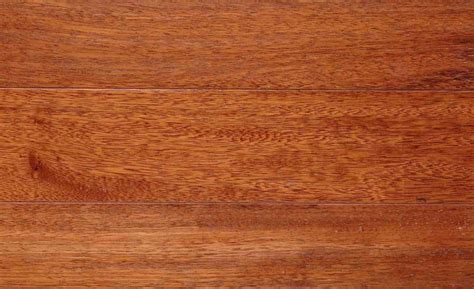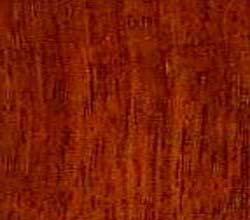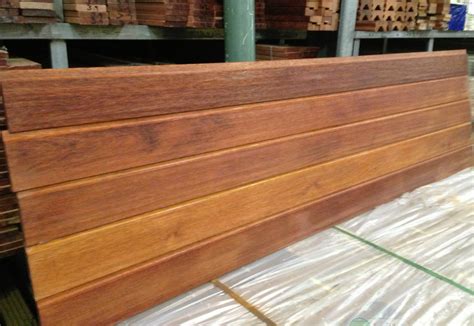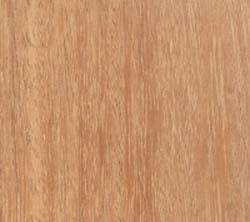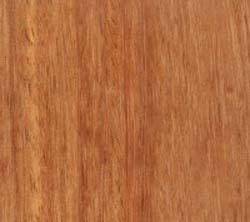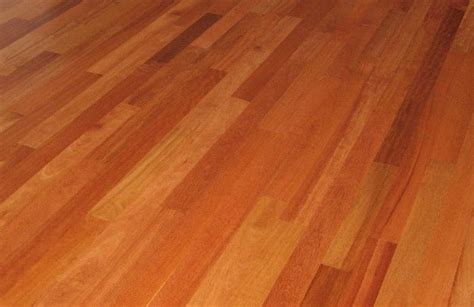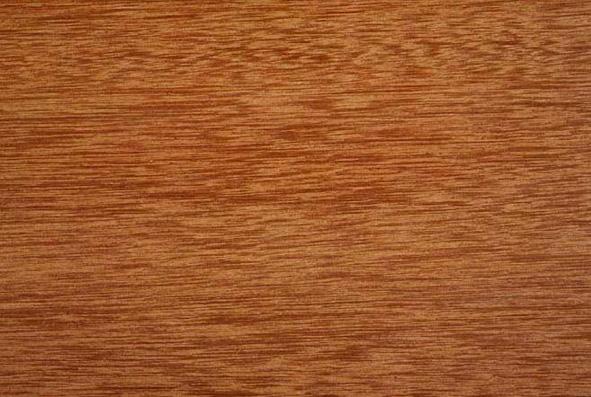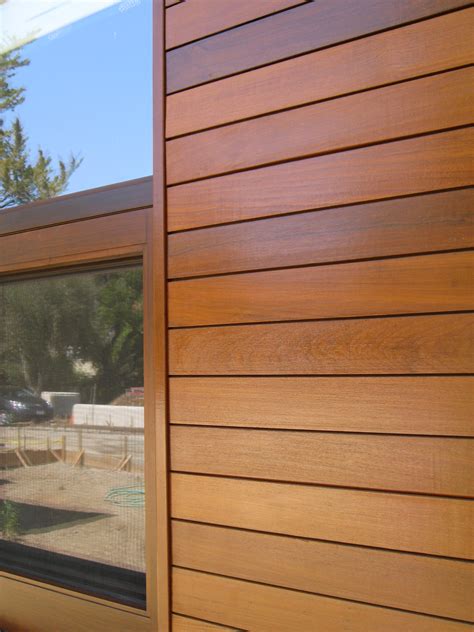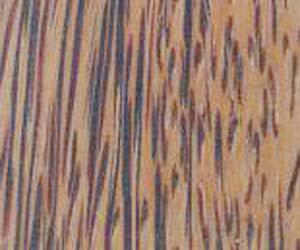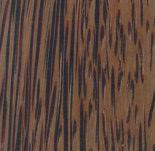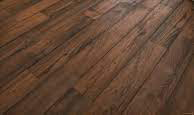Wood species and properties
WOOD SPECIES & PROPERTIES
DID YOU KNOW that there are only 4 wood species in Indonesia available that are to a great degree termite resistant? These species are Bangkirai, Merbau, Djati teak, and Ironwood (but only the core wood - heartwood - of the trunk), Djati teak is far too expensive to be used for wooden prefab houses and Ironwood is prohibited to be exported, as such only 2 wood species remain for the construction of reliable termite resistant wooden houses.
All of the timber used for our projects is obtained from sustainably managed felling concessions overseen by the Ministry of Forestry of the Government of Indonesia. As such all wood is licensed to be exported and is obtained from controlled foresting operations.
Find below an overview of the tropical hardwood species that we use for our projects.
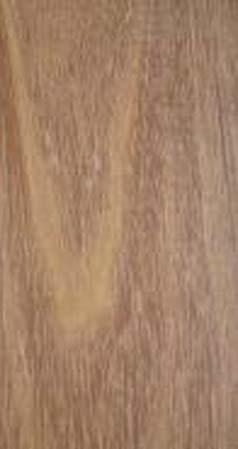
Uncoated Bangkirai
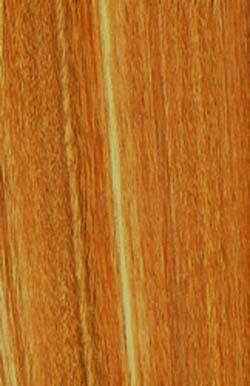
Transparent coated Bangkirai
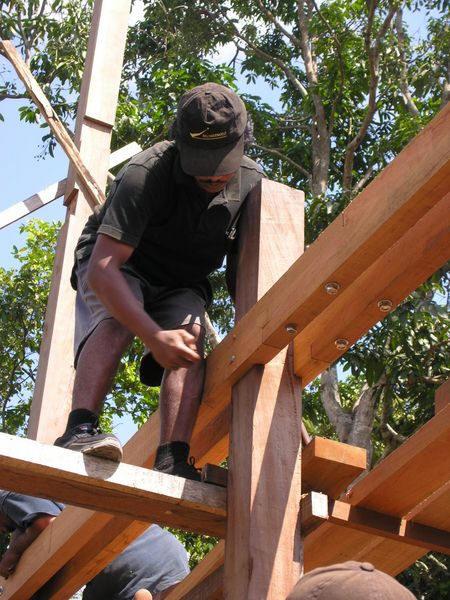
Installation of truss beams from Bangkirai
TECHNICAL SPECIFICATIONS (PHYSICAL PROPERTIES)
Botanical name: Shorea Laevis
Other names: Yellow or red Balau
Indonesian origin, the island of Kalimantan
Sapwood color:: yellowish pale to light brown
Heartwood color: Light to dark reddish brown
Grain: predominantly straight
Texture:
fine to rather coarse
Common use: constructions, heavy-duty flooring, sidings
Physical properties at 12%
Density: 850-900 kg/m3
(7,710 )- 8,825 N/m3)
Specific gravity: 0.91
Bending strength: 145 MPa
Compression strength // grain: 117 MPa
Shear strength //. grain: 11 MPa
Modulus of elasticity: 22,900 Mpa
TECHNICAL SPECIFICATIONS (PHYSICAL PROPERTIES)
Botanical name: Intsia Bijuga
Other names: Ipil, Kawai, Lumph, a Vesi
Indonesian origin, Irian Jaya
Sapwood color:: Dark yellowish brown
Heartwood color: Brown grey to brown red
Grain: straight or occasionally interlocked
Texture: Evenly coarse
Common use: Exterior and interior flooring, cabinets, doors,
Physical properties at 12%
Density: 850-900 kg/m3
(7,710 )- 8,825 N/m3)
Specific gravity: 0.68
Bending strength: 145 MPa
Compression strength // grain: 117 MPa
Shear strength //. grain: 11 MPa
Modulus of elasticity: 16,200 Mpa
TECHNICAL SPECIFICATIONS (PHYSICAL PROPERTIES)
TECHNICAL SPECIFICATIONS (PHYSICAL PROPERTIES)
Other names: Kapur, Keladan, Belakan
Indonesian origin, Islands of Sumatra, Java, Kalimantan
Sapwood color:: yellowish pale to light brown
Heartwood color: Light to dark reddish brown
Grain: predominantly straight
Texture:
fine to rather coarse
Common use: constructions, heavy-duty flooring, sidings
Density: 850-900 kg/m3
(7,710 )- 8,825 N/m3)
Specific gravity: 0.91
Bending strength: 145 MPa
Compression strength // grain: 117 MPa
Shear strength //. grain: 11 MPa
Modulus of elasticity: 22,900 Mpa
GENERAL
The use of Coconut tree wood is characterized by 3 different parts of the tree, viz; the bottom part, the middle part, and the top part, each of them with different physical properties, Color tones and hues range from golden to near ebony, with dark brown flecks. There are three basic color divisions relating to the timber's density: dark brown tones (high density); medium brown tones (medium density); and light golden tones (low density), whereas the bottom part with the lightest color has the lowest strength and the op top part with the darkest color has the highest strength. The middle part lies in between. Only an expert can verify the different classes. The property table on the right side shows the figures from the highest grade to the lowest grade top of the tree to the bottom of the tree)
When we build in Coconut wood we aim at the purchase of the highest grade Coconut wood, though this is not always possible. Some mixture with middle-grade Coconut wood may occur.
CHARACTERISTICS
It is a misunderstanding that Coconut wood is classified as a hardwood, on the contrary, it is a softwood. Coconut trees have no annual growth rings, rays, heartwood, or branches, meaning that coconut timber is free from knots and other such imperfections. A Coconut tree is often called “the upside-down tree”, since its more dense wood is in the outer rings of the tree, while the softer wood is in the heart of the tree. This is one of the reasons that termites love the juicy Coconut wood since dinner is served at plenty in the core of the tree by only digging thru the thin outer tree rings. The maximum beam size for structural purposes is about 60 x 100 mm since this wood needs to be taken from the dense outside of the tree.
TECHNICAL SPECIFICATIONS (PHYSICAL PROPERTIES) )
Other names: Yellow or red Balau
Indonesian origin, Island of Kalimantan
Sapwood color:: yellowish pale to light brown
Heartwood color: Light to dark reddish brown
Grain: Straight
Texture: Medium to fine
Common use: light constructions, flooring, beams, posts, furniture.
Density:
top tree wood: 600 - 800 250-850 kg/m3 (5,880 - 8,340 N/m3
Middle tree wood: 400-600 kg/m3 (3,920 - 5,890 N/m3
Bottom tree wood: 200-400 kg/m3 (1,960 - 3,920 N/m3)
:
Specific gravity: 0.25 - 0.6
Bending strength: 170 - 106 MPa
Compression strength // grain: 40 - 60 MPa
Shear strength //. grain: ????
Modulus of elasticity: 9,400 - 13,400 Mpa
